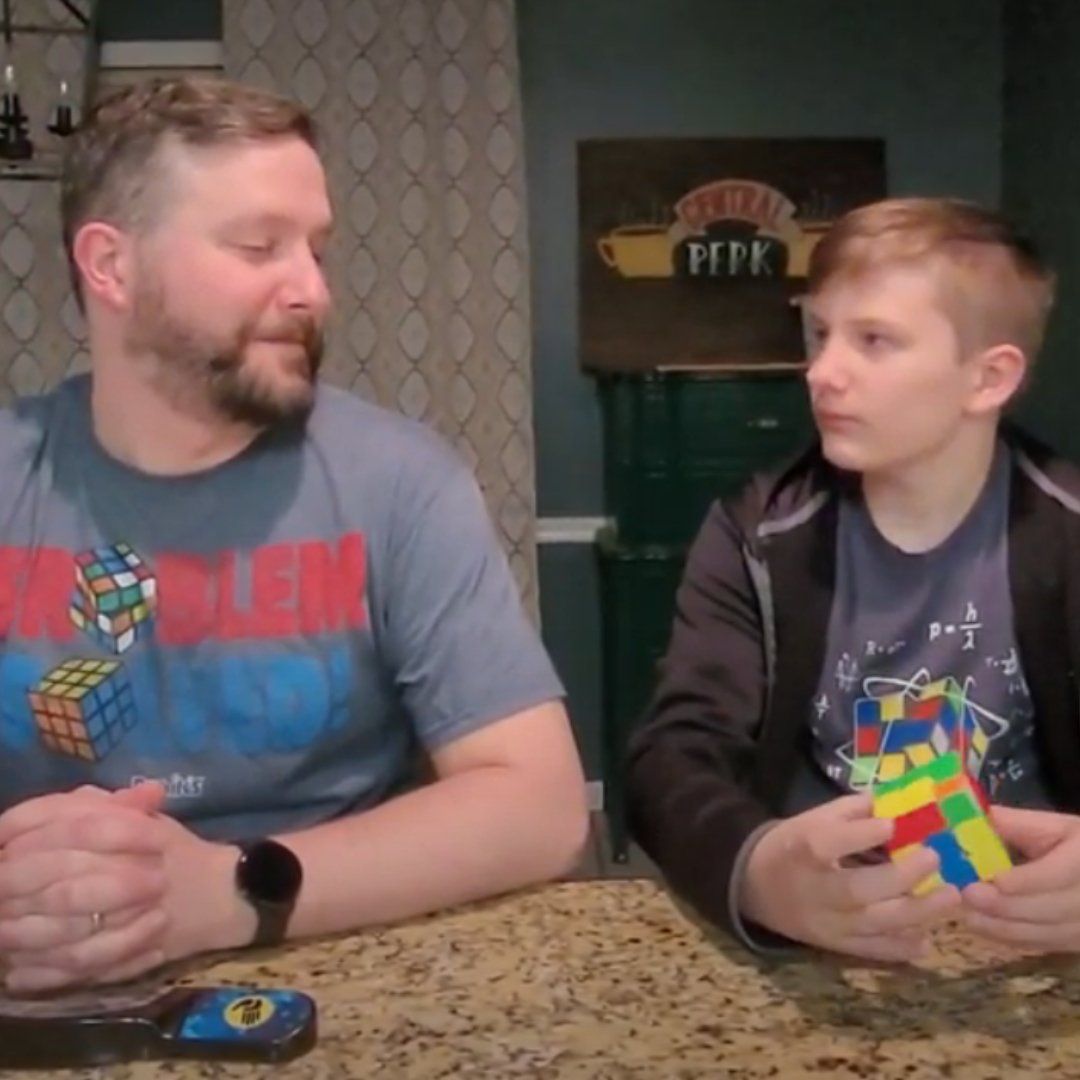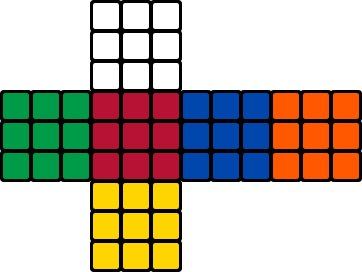Brandon's Hidden Talent
Who would have guessed...
That our very own pharmacist Brandon is a whiz at solving Rubik's Cubes! His nimble fingers effortlessly turn the cube this way and that, his quick mind thinking of the next "algorithm" needed, and before we know it, the cube is returned to its orderly configuration with a single color on each face.
Brandon, what triggered your interest in Rubik's Cubes and how long have you been good at solving them?
I was given a Rubik's cube one Christmas about a dozen years ago but it took a little while before I got interested in it. I've always liked solving problems and using my memory, so it's the perfect challenge for me.
There are over 43 quintillion (43 followed by 18 zeros) possible arrangements. On average, how many moves, or algorithms, does it take you to solve the puzzle?
It takes me about 12 to 15 algorithms to solve a cube and I continue to learn new algorithms.
There are many different models of Rubik's Cube. Do you have a favorite?
My current favorite is the Megaminx, which has 12 faces, each with 5 sides. I figured out how to solve it on my own.
Do you like other challenging puzzles?
My wife can confirm that I love brain teasers, riddles, and all sorts of puzzles. Our son Kohen is the same way and he pushes himself by setting personal best goals. He's also a speed solver, as you can tell from the video above. One of our daughters also likes puzzles, since the age of three.
So, for all you puzzle-loving patients out there, here's your challenge -- bring Brandon a puzzle that will be a challenge for him to solve!
A bit of history...
What was originally called "Magic Cube" was created in 1974 by Ernő Rubik, then 29 year old architect and instructor of an interior design class, "Form Studies", at the Academy of Applied Arts and Crafts in Budapest, in Communist Hungary. As he likes to say, he "discovered" the puzzle while considering how to create a physical model that would help his students understand certain abstract properties of shape. It took Rubik several months to fashion wooden blocks, paper, glue, rubber bands, and paper clips into the first cube.
Upon scrambling it, Rubik was immediately faced with a second challenge, that of putting the cube back to its original configuration. It took him a full month to solve the puzzle. Realizing that there could be commercial value in the cube, he applied for a patent on January 30, 1975. It became a sensation within two years in Hungary and in 1979, it was taken to Germany's Nuremberg Toy Fair, following which it was licensed to the Ideal Toy Corp. They renamed it Rubik's Cube, and in 1980 it became an instant success worldwide.
Image of the color scheme of a Rubik's Cube, by N174 on Wiki Commons
Value for Maths and Sciences
Rubik thought that people with a background in maths, science, and engineering would be most interested in the puzzle, especially as it can be used to learn group theory, a building block of abstract algebra. Pullitzer-Prize winning scientist Douglas Hofstadter explains, “Any twist of any face (clockwise 90 degrees, counterclockwise 90 degrees, or 180 degrees) is a group element, and so are arbitrary sequences of such twists.” Parallels have also been drawn between methods of solving Rubik's Cube and particle physics, and the Rubik's Cube has served in teaching as a model for sequential problem solving, as well as a tool to enhance spatial reasoning.
Even the term used to describe a sequence of moves is related to maths, "an algorithm". It refers to using a list of well-defined instructions for performing a task from a given initial state, through well-defined successive states, to a desired end-state. Beginner Rubik's Cube solvers usually use simpler algorithms that produce a desired outcome on specific pieces while also affecting other pieces, and slowly migrate towards more complicated algorithms which produce desired outcomes without affecting other parts of the cube along the way.
References and Resources:
- Entry in Wikipedia about Rubik's Cube -- https://en.wikipedia.org/wiki/Rubik%27s_Cube
- Article in UK's The Telegraph -- https://www.telegraph.co.uk/technology/google/10840482/Rubiks-cube-invention-40-years-old-and-never-meant-to-be-a-toy.html
- Radio Canada short history of Rubik's Cube -- https://ici.radio-canada.ca/premiere/emissions/les-annees-lumiere/episodes/508069/rattrapage-du-dimanche-24-janvier-2021
- Smithsonian article in 2014 -- https://www.smithsonianmag.com/arts-culture/behind-unceasing-allure-rubiks-cube-180951866/
- Smithsonian article of 2020, includes video of an interview with Ernő Rubik -- https://www.smithsonianmag.com/innovation/brief-history-rubiks-cube-180975911/
- Article by Brian Rohrig, science teacher -- https://www.youcandothecube.com/blog/puzzling-science-using-the-rubiks-cube-to-teach-problem-solving
Contact Us






